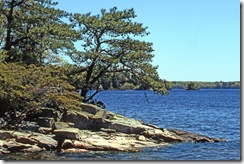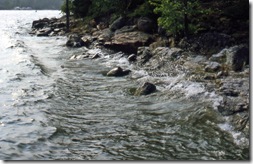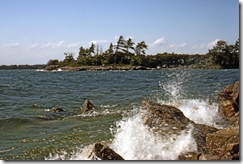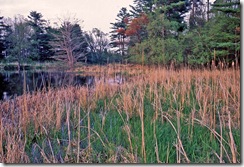Written by
Bud Andress posted on March 15, 2008 13:07
By Bud Andress
Not that long ago, some 12,500 years, the great North American continental glacial period drew to an end. What was first revealed in the 1000 Islands region must have resembled present-day northern new environments of mud and smooth rock, compared to that which followed in time--an archipelago of richly vegetated shores and sparkling blue-green waterways.
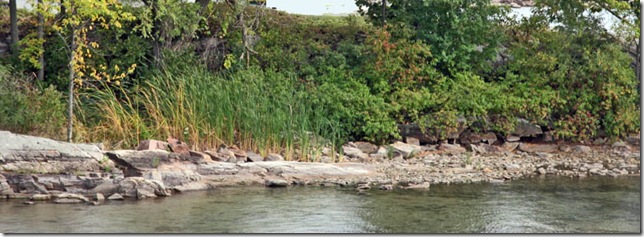 |
Photo: Paul Malo
|
Variegated shoreline tapestry
|
As archaeological examination would show, the aboriginal people used or passed through the islands dating back 9000 years. Their footprint in the region wasn’t always all that small relatively speaking to their time. However, equipped with the technology of the day and with a special appreciation for their surrounding natural environment, the aboriginals only scratched the surface of the area with the footprint of their villages and small fishing camps. Time and a humus overlay has all but concealed that footprint. It wasn't until the eighteenth century that the Europeans required area shores to be fixed and straightened and hardened for their landings.
The greater Thousand Islands region is a melting pot of flora and fauna diversity. It is a place of plants and animals quite simply because of its latitude--an intersecting point of northern affinity and southern affinity species. Abundant water resources and habitat niches further make for a diverse ecosystem. Island and mainland shorelines and adjacent littoral zones are key components in the attachment of aqua life to terrestrial life in the Thousand Islands. It is part of what makes life in the Thousand Islands so special. Life for we humans living or visiting here today would not be as enjoyable if this fragile attachment were to become a missing link. I sometimes fear we only see the gradual change through our peripheral vision, if at all.
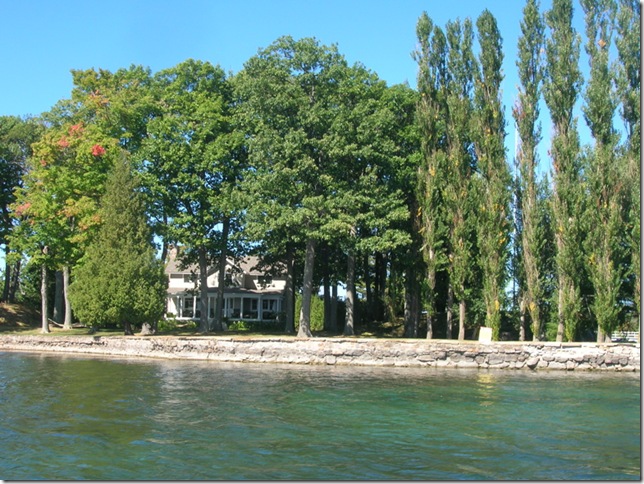 |
Photo: Paul Malo
|
Seawall, Fairyland Island.
|
History eventually sorted the colonies of the Europeans, and new nations south and north of the Thousand Islands. By the latter quarter of the nineteenth Century the Thousand Islands had been discovered as a destination to fish, socialize and refresh in its cool water, having been so long disregarded by those who passed by and only saw rocky knobs and poor farmland potential. With access by rail to the new playground, grand hotels and island retreats sprang up for wealthy vacationers. Services which centred around the river environment would be provided by those who had planted roots in the rocky soil and had built their mills and small communities.
With the boom of constructing grand mansions, many which still stand today on their own as picturesque postcard storytellers, came the need to “improve” the shorelines. This often meant construction of stone seawalls and the filling-in of embayments and marshlands. The great life line, the littoral zone was beginning to be challenged. Looking critically at these hardened shoreline properties today one can see they are part of the story of the golden age--our history lesson on what was preferred, practiced, and expected then. I don’t find them at all disturbing to view today in a historical context. This desire or need to master the waterfront through manipulation of the natural shoreline continued well into the 1970s. However, by the 1980s a new consciousness about our consumption of the landscape, in fact of everything, was settling in.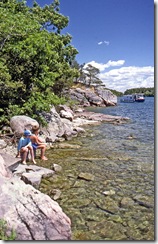
Unfortunately, even today the onslaught of our beautiful natural Thousand Islands shorelines and wetlands continues. Waves no longer dissipate their musical sound on natural slope and fissures; plants and animals struggle to cross an unnatural barrier; marshland plant communities that are important for water quality and diversity of life disappear . For me, there is no excuse in the twenty-first century to be changing a glaciated granite rock shoreline that outlasted a 12,500 year test of time, into a stone and mortar wall. I can accept the intent of the former builders, but not of the present. It appears to be all about posturing and trophy-ism; rarely about site idiosyncrasy need. I fear as much as a kilometer of shoreline is lost annually in the Thousand Islands to corrugated steel, stone and mortar seawalls, solid concrete walls, and in filling. Fortunately there are a few attempting to return small areas of altered shorelines into more environmentally friendly zones and these should be applauded.
Besides the grand homes, the quaint cottages, the many and varied conveniences of river travel, it is the natural beauty of the Thousand Islands, not what we can change it into, that is its true beauty--even if we only realize it through our peripheral vision.
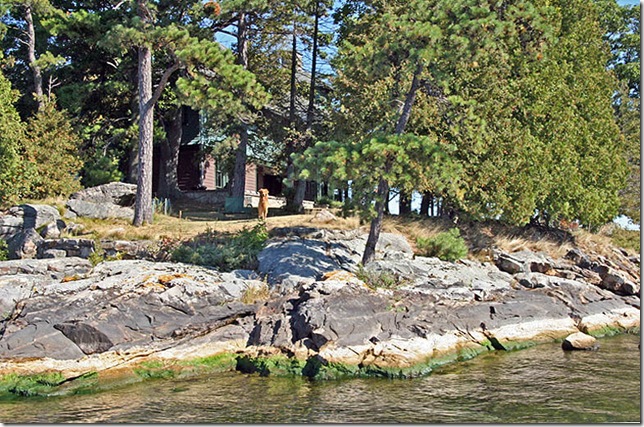 |
Photo: Paul Malo
|
Scow Island Shore.
|
Portfolio of Shorelines by Bud Andress
